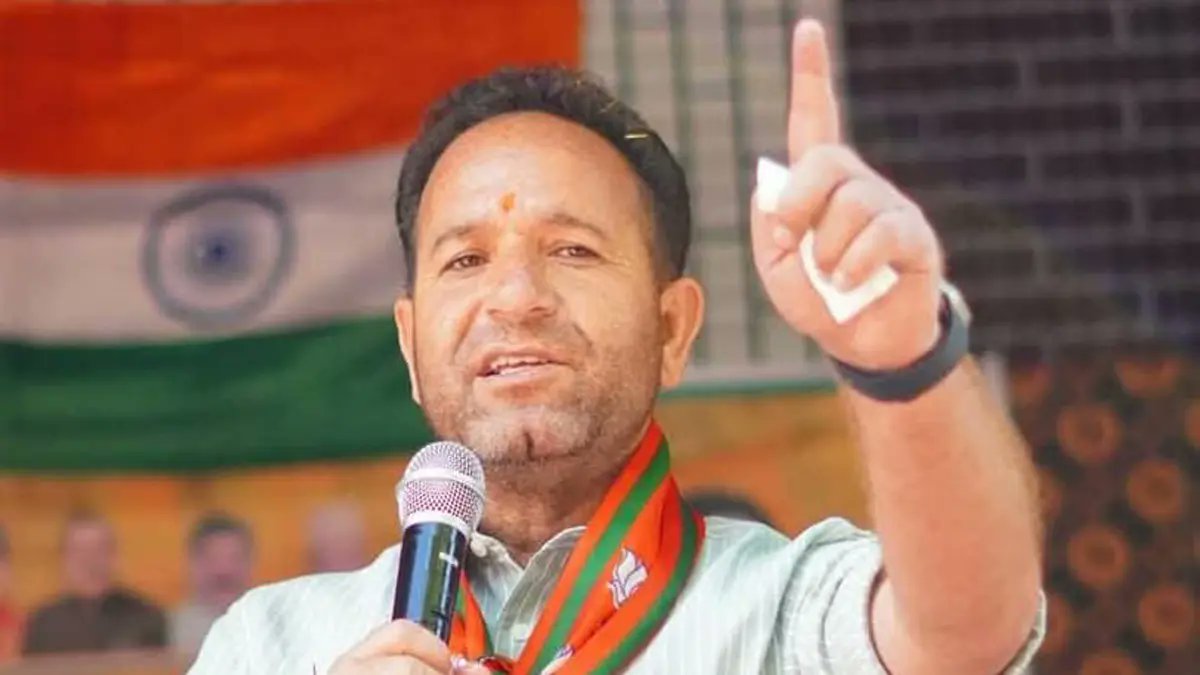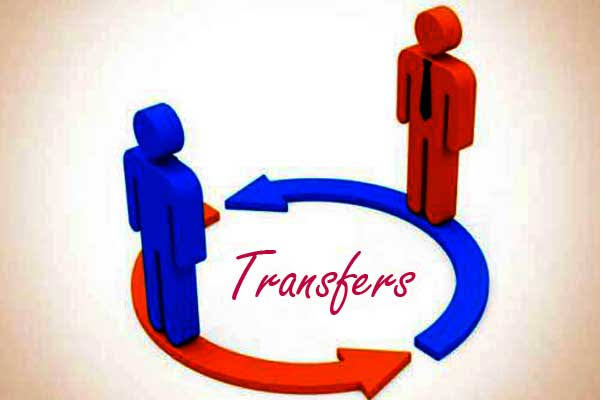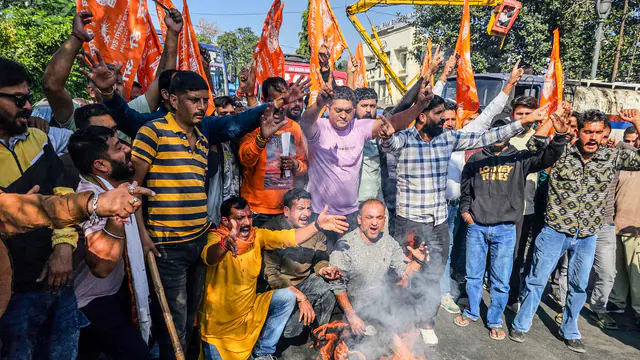LoP Sunil Sharma Hits Out at CM Over Proposed 20% Power Tariff Hike in J&K
By: Javid Amin | 22 November 2025
In the politically charged region of Jammu & Kashmir, electricity tariffs have become more than just numbers on a power bill — they’re a battleground of convictions, promises, and public trust. The proposal by the Kashmir Power Distribution Corporation Limited (KPDCL) to impose a 20% surcharge on electricity consumed during peak winter hours has triggered sharp criticism. At the forefront is Leader of Opposition Sunil Sharma, who has accused the ruling National Conference of committing “electoral fraud” by failing to deliver promised relief and now planning to burden households. Rising Kashmir+1
This article delves into Sharma’s attack, the political context, the wider implications of the proposed hike, and how this feeds into the ongoing narrative of governance, trust, and economic fairness in Jammu & Kashmir.
What Sunil Sharma Is Saying
A. The “Electoral Fraud” Claim
Sunil Sharma has launched a blistering attack on the ruling National Conference government, asserting:
“The NC’s 2024 election manifesto has collapsed under its own lies and false assurances. Omar Abdullah promised 200 units of free electricity to every household in Jammu & Kashmir. Today, instead of fulfilling that promise, his government is preparing to loot people with an outrageous 20 percent increase in peak-hour consumption charges.”
The phrase “electoral fraud” in this context is potent — it suggests not just a broken promise, but one intentionally exploited to secure votes.
B. Direct Challenge to the Chief Minister
Sharma has gone as far as challenging CM Omar Abdullah to disclose:
“How many households actually received the promised free 200 units?”
He demands transparency and accountability, placing the government’s credibility in the spotlight.
C. Warning of Financial Burden
According to Sharma, the proposed 20% surcharge on peak-hour usage will disproportionately hit ordinary citizens:
“This move will loot people and add to the already heavy winter bills.”
He underscores that this is not merely a tariff change — it is a socio-economic burden being placed on households already under stress.
D. BJP’s Position
Sharma, representing the opposition (he is aligned with the ruling party at central level, the Bharatiya Janata Party), says his party will strongly oppose any surcharge that burdens ordinary citizens.
The Context: What’s Behind the Tariff Proposal
A. The Proposal at a Glance
-
KPDCL has submitted to the Joint Electricity Regulatory Commission (JERC) a plan to impose a 20 percent surcharge on electricity consumed during “peak” winter hours (morning and evening).
-
The stated rationale: manage load demand and discourage heavy usage during high-strain periods on the grid.
This matches earlier reporting about peak-hour surcharges in J&K.
B. Government’s Stand
Interestingly, even leaders within National Conference have begun distancing themselves from the surcharge — calling it “unfair” and “ill-timed,” and signalling that the government would not allow people to be unduly burdened. (Context provided from previous summary)
C. Why the Timing Is Sensitive
The winter season in Kashmir brings heightened electricity demand — heating, lighting and longer evenings mean households use more power. Introducing a surcharge now risks being seen as punishing the very increase in use that comes from seasonal necessity.
Moreover, given the region’s historical promise of free or subsidised electricity (especially for winter), the surcharge proposal clashes with expectations.
The Political Flashpoint: Promise vs. Reality
A. The 2024 Manifesto Promise
According to Sharma’s charge, the 2024 election manifesto of the National Conference promised 200 units of free electricity per household. Further details of the rollout remain unclear, and Sharma demands proof of delivery.
B. The Gap Between Promise and Delivery
What we witness is a classic governance dilemma: when election promises meet organisational and fiscal realities, the outcome may be dilution or delay. But when instead of realising promises, new burdens are introduced, credibility gets eroded.
Sharma’s framing of the surcharge as betrayal and punishment is politically potent — it converts a technical tariff issue into a referendum on trust.
C. Symbolic Resonance
This isn’t just about rupees per unit. For many Kashmiris, the promise of free or subsidised electricity was part of the larger hope for normalcy, inclusion, and welfare. The surcharge flips that narrative into one of continued disadvantage and exclusion.
The Wider Implications: Economics, Governance & Trust
A. Economic Impact on Households
A 20% surcharge targeted during morning and evening hours means households with higher winter-peak usage will see steeper increases in bills. For middle-class families already coping with high heating costs, this is significant.
Businesses, especially in retail, tourism and services (all vulnerable sectors in J&K) may also feel squeezed.
Sharma’s attack highlights the burden on “ordinary citizens” — signalling that the opposition intends to frame this as a wider social fairness issue.
B. Energy Justice & Regional Equity
When a region such as Jammu & Kashmir, which participates in hydropower generation and suffers from harsher winters, faces a tariff hike, layered questions arise:
-
Does generation region get preferential tariffs?
-
Are weather/climate burdens fairly internalised?
-
Does policy account for regional vulnerability or simply apply uniform logic?
Sharma’s critique taps into this deeper narrative: the local citizen not getting preferential benefit despite being in a high-cost, high-demand environment.
C. Governance Credibility & Trust
Tariff hikes always risk political backlash, but especially so in regions marked by historic grievances, sensitive identities, and expectations of state support. When promises of welfare are not met, and new costs introduced, citizen trust falters.
Sharma’s accusation of “electoral fraud” is a blunt articulation of this trust deficit.
D. Potential Political Fallout
Given the timing (winter, upcoming local issues, oath of power, public mood) the issue could shape voter sentiment, local opposition mobilisations, and party narratives.
The BJP opposition stance adds an additional layer of competitive politics: the ruling party is attacked for broken promises by the central-aligned opposition, raising stakes for NC in constituency politics.
Outlook: What to Expect Moving Forward
A. Regulatory Process & Public Feedback
-
JERC must process the surcharge proposal — public hearings, stakeholder input, possible modifications or exemptions may follow.
-
Consumer voices, business associations, NGOs will likely press for waivers or special slabs for vulnerable households.
B. Government Response
-
The NC-led government may seek to backtrack, revise the policy, or introduce compensatory relief (for example: free units for low-income categories, off-peak incentives).
-
Communication strategy will be crucial: explaining why the surcharge is proposed, how off-peak incentives work, what relief exists.
C. Political Maneuvering
-
The opposition is likely to take the surcharge proposal into campaign narrative — mobilising protests, public meetings, social media frames around broken promises.
-
The ruling NC will need to manage the optics: delivering on earlier promises (200 free units), showing relief measures, avoiding the perception of “punishing citizens”.
D. Longer-Term Institutional Fixes
-
Beyond the immediate tariff issue, pressure will rise to address structural power sector issues in J&K: transmission losses, winter supply reliability, climate-sensitive tariff design, social subsidies.
-
Political leaders (including Sunil Sharma and Omar Abdullah) will increasingly be judged on delivery, not only rhetoric.
Bottom-Line: More Than a Tariff – A Trust Test
What began as a proposed tariff hike has evolved into something richer and riskier: a trust test between a government and its people in a region fraught with expectations, vulnerabilities and historic promise.
Leader of Opposition Sunil Sharma’s labeling of the surcharge as “electoral fraud” is not merely rhetorical — it reflects a deeper sentiment: that promises of relief have turned into burdens, hopes of support have turned into cost burdens, and households feel the disconnect.
For the ruling National Conference and Chief Minister Omar Abdullah, the challenge is clear:
Will they deliver on their promise of 200 free units? Will they explain and justify the surcharge in a transparent way? Will they mitigate the unfair burden on the most vulnerable?
For the people of Jammu & Kashmir, especially in winter, electricity is not a luxury—it is a lifeline. Any measure that threatens to turn that lifeline into a burden risks more than public anger—it risks the widening of the gulf between the state and citizen.
In the end, this is not just a tariff story. It is about governance, political credibility, regional fairness, and the social contract between the governed and the government.
And Kashmiris are watching closely.




